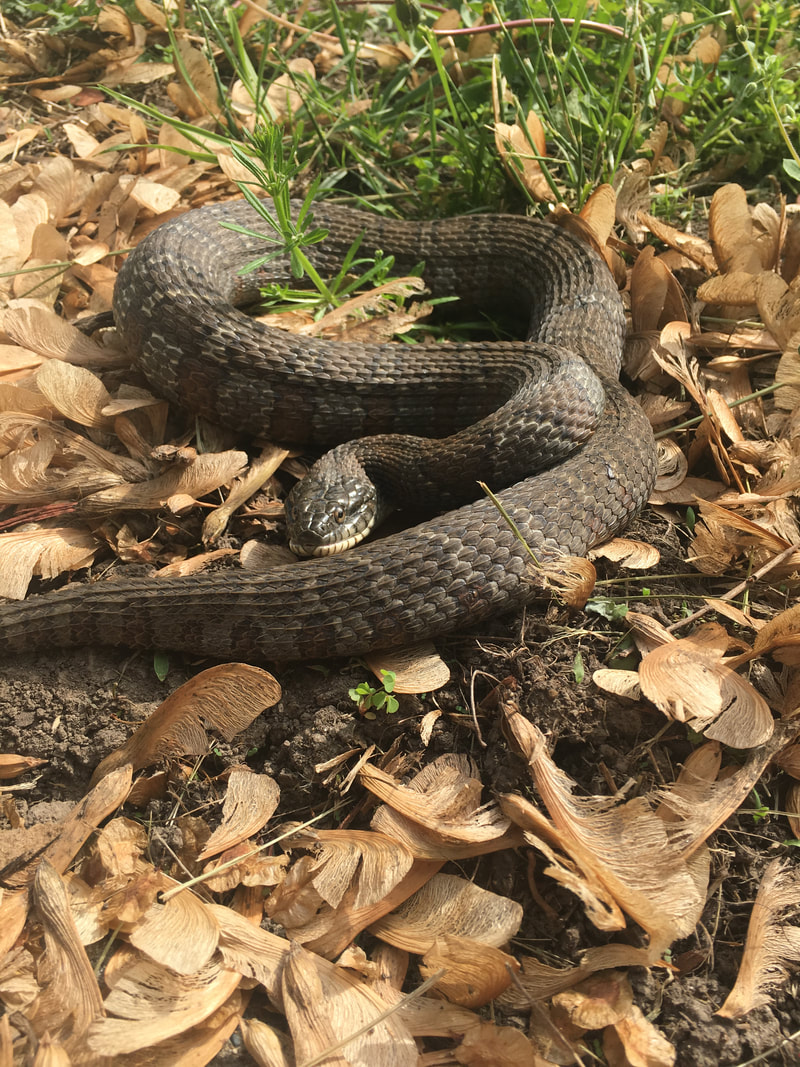NORTHERN WATERSNAKE
Nerodia sipedon sipedon
Constrictor- Nonvenomous
They are dark-colored snakes and may be brown, tan or grayish. The coloration is much more vivid in young and wet specimens. Their back and sides have a series of square blotches that alternate and may merge to form bands.
Adults grow 24-42 inches with females being larger than males.
Found throughout the northern and western two-thirds of the state. They live in and near a wide variety of aquatic habitats: creeks, rivers, sloughs, ponds, lakes, and swamps. They hide under rocks or other objects along the edge of rivers and ponds.
They primarily feed on amphibians and fish and are often seen basking on banks of rivers or ponds or on branches overhanging the water. For defense, watersnakes bite viciously and secrete a strong-smelling musk from glands at the base of the tail. It is frequently misidentified as a cottonmouth.
They are dark-colored snakes and may be brown, tan or grayish. The coloration is much more vivid in young and wet specimens. Their back and sides have a series of square blotches that alternate and may merge to form bands.
Adults grow 24-42 inches with females being larger than males.
Found throughout the northern and western two-thirds of the state. They live in and near a wide variety of aquatic habitats: creeks, rivers, sloughs, ponds, lakes, and swamps. They hide under rocks or other objects along the edge of rivers and ponds.
They primarily feed on amphibians and fish and are often seen basking on banks of rivers or ponds or on branches overhanging the water. For defense, watersnakes bite viciously and secrete a strong-smelling musk from glands at the base of the tail. It is frequently misidentified as a cottonmouth.



